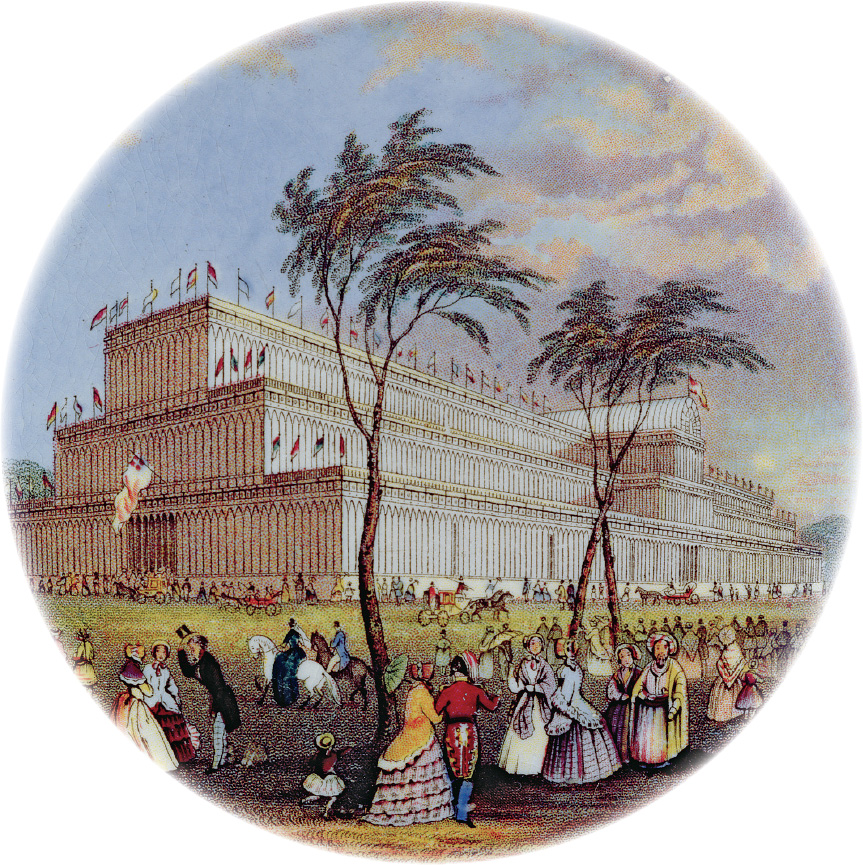A History of Western Society: Printed Page 660
A History of Western Society, Value Edition: Printed Page 664
Industry and Population
In 1851 London hosted an industrial fair called the Great Exhibition in the newly built Crystal Palace. The more than 6 million visitors from all over Europe marveled at the gigantic new exhibition hall set in the middle of a large, centrally located park. The building was made entirely of glass and iron, both of which were now cheap and abundant. Sponsored by the British royal family, the exhibition celebrated the new era of industrial technology and the kingdom’s role as world economic leader.
Britain’s claim to be the “workshop of the world” was no idle boast, for it produced two-thirds of the world’s coal and more than half of all iron and cotton cloth. More generally, in 1860 Britain produced a remarkable 20 percent of the entire world’s output of industrial goods, whereas it had produced only about 2 percent of the total in 1750.2 As the British economy significantly increased its production of manufactured goods, the gross national product (GNP) rose roughly fourfold at constant prices between 1780 and 1851. At the same time, the population of Britain boomed, growing from about 9 million in 1780 to almost 21 million in 1851. Thus growing numbers consumed much of the increase in total production.

Rapid population growth in Britain was key to industrial development. More people meant a more mobile labor force, with many young workers in need of employment and ready to go where the jobs were. Sustaining the dramatic increase in population, in turn, was only possible through advances in production in agriculture and industry. Based on the lessons of history, many contemporaries feared that the rapid growth in population would inevitably lead to disaster. In his Essay on the Principle of Population (1798), Thomas Malthus (1766–1834) examined the dynamics of human populations. He argued:
There are few states in which there is not a constant effort in the population to increase beyond the means of subsistence. This constant effort as constantly tends to subject the lower classes of society to distress, and to prevent any great permanent melioration of these conditions.3
Given the limited resources available, Malthus concluded that the only hope of warding off such “positive checks” to population growth as famine and disease was “prudential restraint.” That is, young men and women had to limit the growth of population by marrying late in life. But Malthus was not optimistic about this possibility. The powerful attraction of the sexes, he feared, would cause most people to marry early and have many children.
Economist David Ricardo (1772–1823) spelled out the pessimistic implications of Malthus’s thought. Ricardo’s depressing iron law of wages posited that over an extended period of time, because of the pressure of population growth, wages would always sink to subsistence level. That is, wages would be just high enough to keep workers from starving.
Malthus, Ricardo, and their followers were proved wrong in the long run, largely because industrialization improved productivity beyond what they could imagine. However, until the 1820s, or even the 1840s, contemporary observers might reasonably have concluded that the economy and the total population were racing neck and neck, with the outcome very much in doubt. There was another problem as well. Perhaps workers, farmers, and ordinary people did not get their rightful share of the new wealth. Perhaps only the rich got richer, while the poor got poorer or made no progress. We will turn to this great issue after looking at the process of industrialization beyond the British Isles.